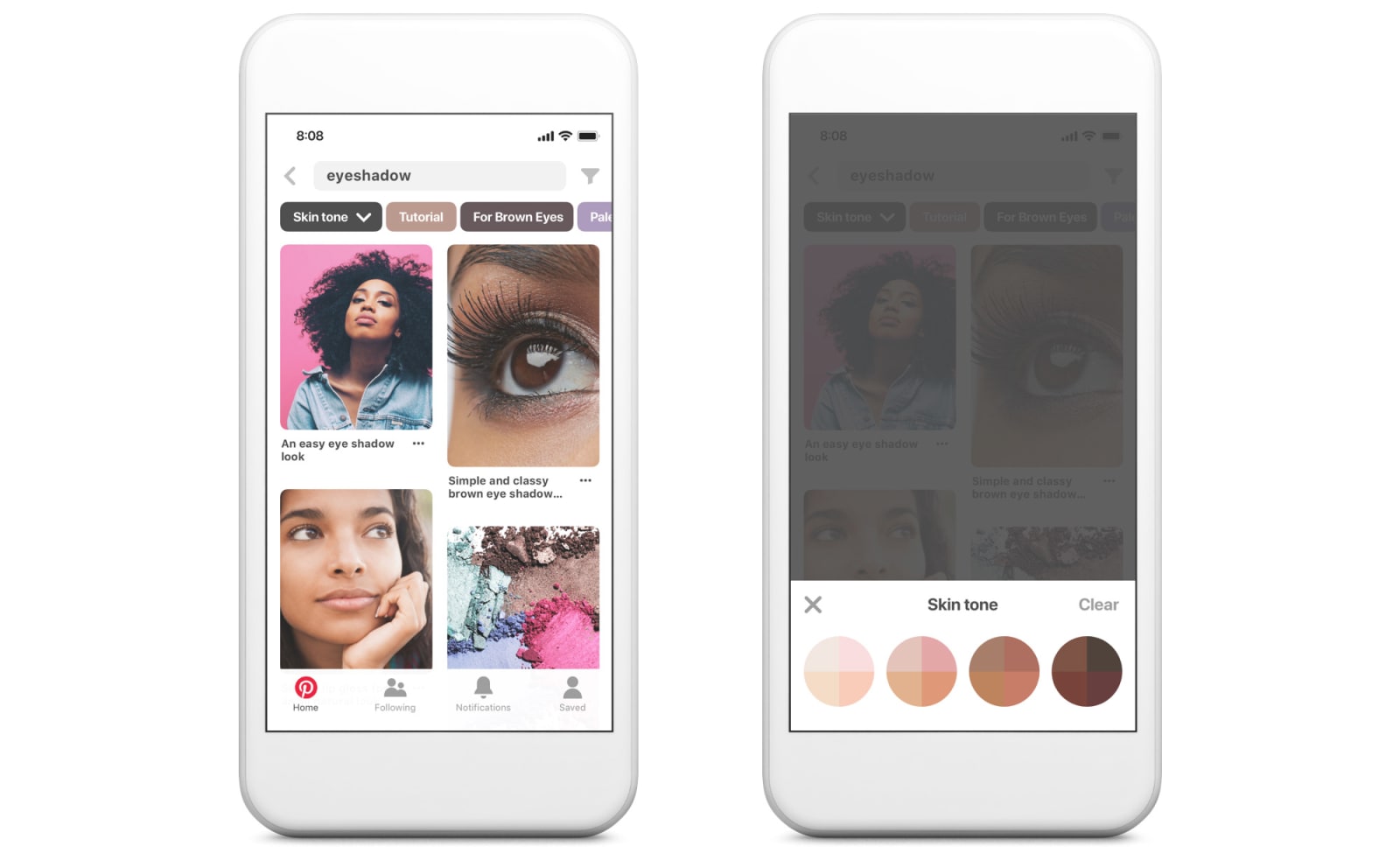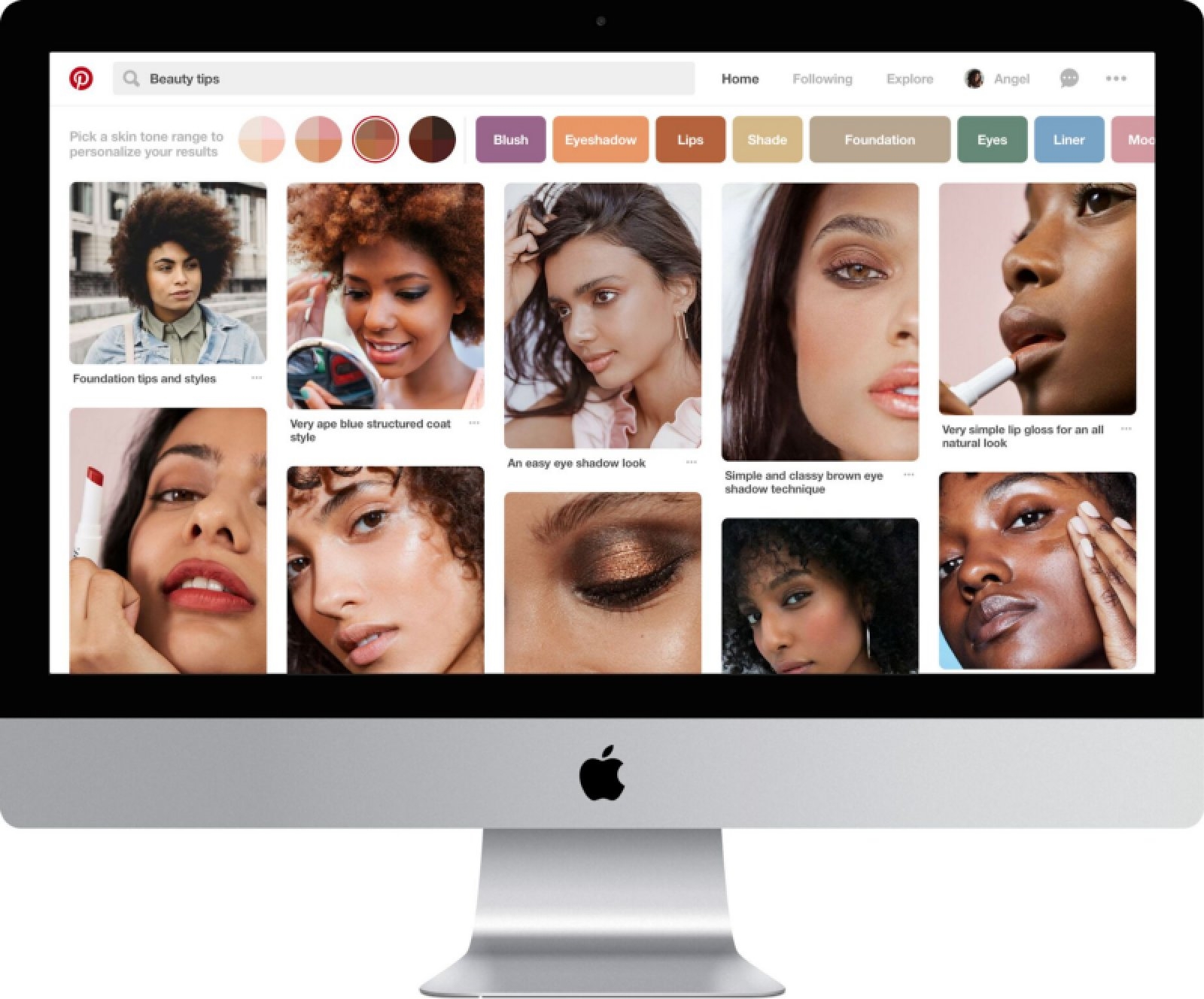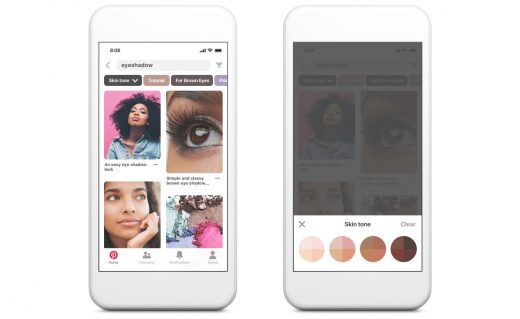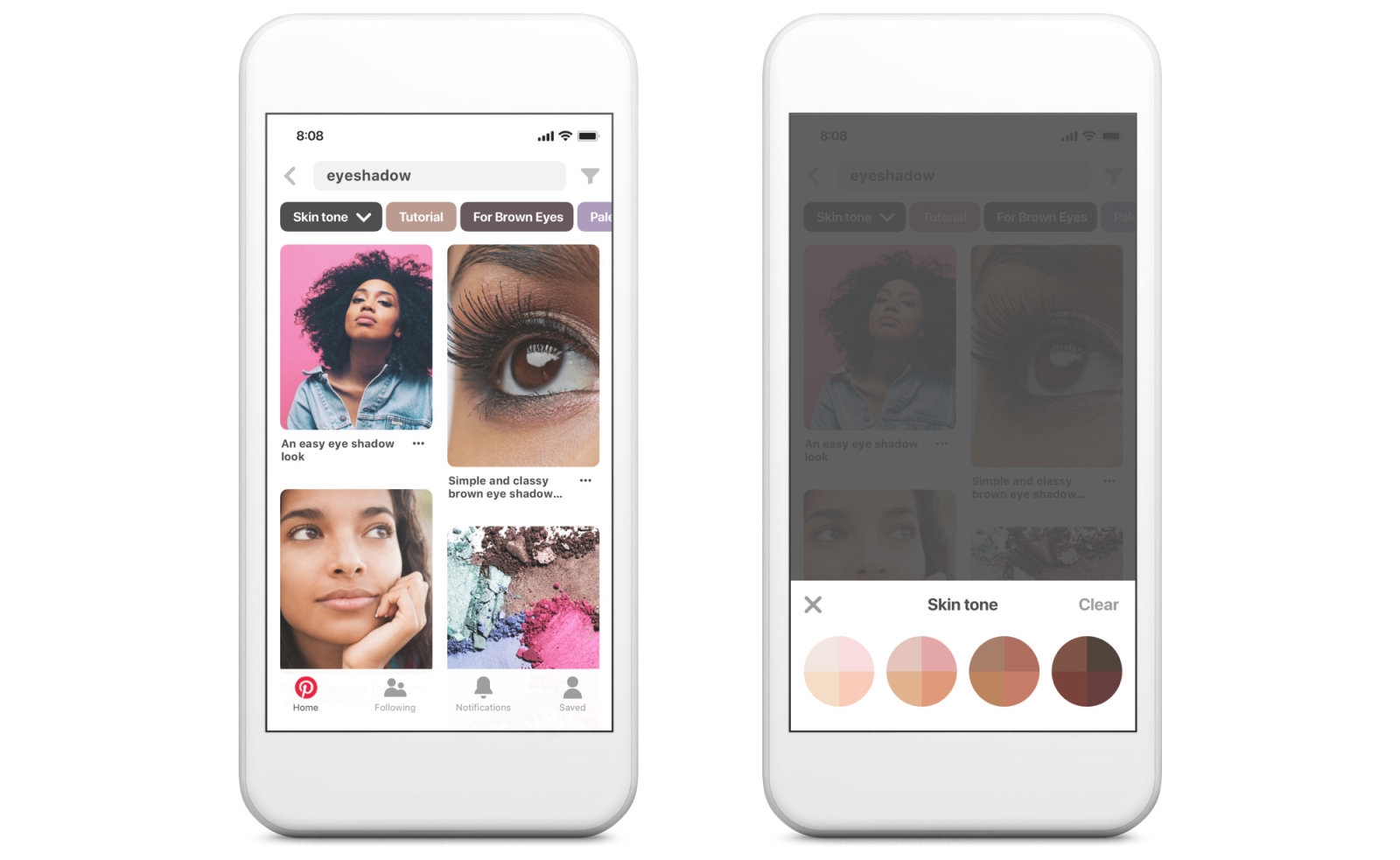Pinterest’s diverse workforce helped it design a better skin tone filter

Last April, Pinterest began testing a search feature that allows users to filter results by skin tone. The idea being that those looking for beauty tips will be able to find relevant makeup and hair advice, regardless of their race. Today, the company is announcing that this feature will roll out more broadly across its user base, and that it’s also coming to its mobile app. Not only is it a particularly useful feature, it’s also emblematic of Pinterest’s ever-growing efforts at increasing the diversity and inclusion within the company.
In fact, Pinterest outright said that the skin tone search feature is a direct result of the Diversity and Inclusion team working closely with the technical and engineering teams within the company. “By combining the latest in machine learning and inclusive product development, we’re able to directly respond to Pinner feedback and build a more useful product,” said Pinterest in a statement.
Like many other prominent tech companies, Pinterest is no stranger to the difficulties in hiring a more diverse staff. But it’s also one of the more outspoken in its desire and efforts to do so. Pinterest was one of the first tech companies to not only publicly release annual company diversity reports, but also set yearly public hiring goals.
In 2018, the company achieved two out of the three goals it set for itself in 2017. Pinterest wanted to increase hiring rates from people from underrepresented ethnic backgrounds in non-engineering roles (this went from 12 percent to 14 percent), in engineering roles (it wanted to hit 8 percent but only reached 7 percent), as well as the hiring rates for full-time women engineers (it hit its goal of 25 percent). What’s more, Pinterest also reported that women now make up 47 percent of the company, and 30 percent of those working in technical fields are also women. This makes it one of the most gender diverse companies in the industry, especially when compared to companies like Apple, Google and Facebook.

This progress is reflected in the product, which has been tweaked over the years to serve a more diverse audience. According to Wired, the idea of diversifying the search results came, in part, from Pinterest’s head of diversity and inclusion Candice Morgan, who was using the search engine to look for black hair ideas but couldn’t find anything that fit her own tightly coiled curls.
“It was a poignant realization,” said Morgan to Engadget. “Our mission is to help everyone find information, and create the life they love. But we were somehow not as inclusive as we should’ve been.” Based on feedback from both users and co-workers, it turns out she wasn’t the only one frustrated, and a cross-functional group from all parts of the company came together to help solve the issue.
Importantly, even though Morgan was hired to oversee diversity and inclusion programs, her role has evolved over the years to include having a say in how the site works. She now works closely with Product and Engineering teams on a regular basis, and the result is more inclusive features, such as the aforementioned skin tone ranges. According to Pinterest, the diversity team worked with the product team from the beginning to “create potential tags around skin tone and hair textures, and choose the skin tone range palettes and colors.”
“Pinterest is a visual discovery engine that serves billions of recommendations to hundreds of millions of people in areas like beauty and style, and so we need to offer a personalized and relevant product, otherwise it just won’t be useful,” said the company in an emailed statement. “A more diverse company is good for Pinners and our business.”

A diverse workforce seems prudent when you look at the various mishaps that have befallen other tech companies. Google, for example, got into trouble a few years ago when its Photos algorithm mistakenly identified black people as gorillas. It has since apologized for this, though Google’s solution to the problem appears to be only superficial — it has blocked “gorilla”, “chimp”, “chimpanzee”, and “monkey” from the recognition algorithm, instead of addressing the real problem of misidentification.
One wonders if the initial mistake might not have even happened, had Google tested its recognition algorithm with a more diverse set of people in the first place, and if a more diverse workplace might’ve helped (as of 2018, just two and a half percent of Google’s overall workforce identify as Black or African-American).
The lack of diversity in tech has other ramifications, too. Facebook, for example, has had to deal with a rise of hate speech and hate groups on its platform in recent years, and seems to have been ill-equipped to handle them. Civil rights activists, on the other hand, have had their accounts suspended for speaking out against racism. Seeing as Facebook has over 2.27 billion users from all walks of life, it should stand to reason that it should have a workforce as diverse as the populace it’s trying to serve.
“There is a bias to what kinds of problems we think are important, what kinds of research we think are important,” said Timnit Gebru, a technical co-lead of the Ethical Artificial Intelligence Team at Google, to MIT Technology Review. “If we don’t have diversity in our set of researchers, we are not going to address problems that are faced by the majority of people in the world.”
Morgan has a similar stance. “The potential for machine learning to take shortcuts or serve the masses as opposed to different groups within the user base is massive,” she said. For example, she said, if you just search for “best makeup”, a basic algorithm might only bring up the result for what’s the most popular, not what’s good for your particular skin tone. “We really have to use humans in every evaluation, to really understand how to really be relevant to users,” said Morgan. “The point is to be relevant. Not just regress to the mean.”
Even though Pinterest’s increased diversity is good, it’s not quite enough. The numbers of underrepresented minorities in its technical fields are still very low — four percent black, nine percent Latinx — as are their numbers in leadership — zero percent black, seven percent Latinx. But at least Pinterest acknowledges it.
“We still have a long way to go,” said the company in its diversity report. “That’s why we continue to make this work a top priority for Pinterest. We know it’s critical to building a great product and a strong company.”
(30)




